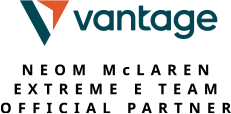Vantage uses cookies that are essential for our website to work. We also use optional analytical cookies to help us to improve our website and the services, content and ads we provide to you which you can accept or reject here. Please see our Cookies Policy for more information on how we use cookies.
CFDs and Spread Bets are complex instruments and come with a high risk of losing money rapidly due to leverage. 73.5% of retail investor accounts lose money when trading CFDs and Spread Bets with this provider. You should consider whether you understand how CFDs and Spread Bets work and whether you can afford to take the high risk of losing your money. Please seek independent advice if necessary.
Forex CFDs: Overview, How it Works, and How to Trade
Forex CFDs are one of the most common trading tools you’ll find on your CFD trading platform. In this guide, we go through what Forex CFDs are, how they work and how you can trade them.
What are CFDs in Forex?

Forex Contracts for Difference (CFDs) are financial tools that allow you to speculate on the price movements of currency pairs. Forex CFDs work similarly to other CFDs, except with currency pairs.
Since the forex market is volatile, you can opt to trade forex CFDs as a trader and take advantage by speculating on both rising and falling prices. Unlike other instruments, forex CFDs give you the opportunity to take advantage of market opportunities whether the markets are on an upward or downward trend.
Before you venture into forex CFDs, you need to understand how the underlying forex market works. Let’s look at some vital elements of forex CFDs below:
Currency Pairs
Foreign exchange trades happen in currency pairs. That way, you’re buying one currency of the pair while simultaneously selling the other. [1]
Take the GBP/USD pair as an example. You have the base currency on the left, which is the GBP. This base currency is also what you’re buying. You have the quote currency USD on the right, which is what you’re selling.
To standardise the forex market, currency pairs trade in lots. Lots, in essence, are batches of currency. Since price changes in currency markets are often small, lots have to be significant to take full advantage of these movements.
Forex trading isn’t like CFD trading. There are some fundamental differences between these two instruments: There are two types of Forex CFDs: options and spot markets. You trade spot forex CFDs based on their current market price in real-time. This type of CFDs has no fixed expiration.
Forex CFDs work similarly to CFDs in other asset classes. It also comes with all the features, benefits, and risks of different CFD types. For example, you can still take advantage of market opportunities in a bull or bear market with online CFD trading, as long as your price predictions are accurate. Let’s look at some features present in Forex CFD markets. Forex CFDs are leveraged, which means you can increase your exposure in the forex exchange market without having to pay the full price of the asset from the start.
You require a minimum amount of capital in your account to open a forex CFD position. This minimum amount is called margin. There are two types of margin: A deposit margin is pretty straightforward. That’s the amount you need to open a leveraged CFD position in the forex markets.
More sophisticated traders can use Forex CFDs to hedge their positions. Hedging involves holding two (or more) positions on one asset simultaneously to offset any losses from one position with potential profits from the others.[3] To trade Forex CFDs, you’ll have to pay some costs and fees. Let’s take a quick look at them: If you want to start trading Forex CFDs today, here are some quick steps to get started. Setting up a trading account for your Forex CFDs can be done in a few steps. Choose a broker and follow the steps to open an account on their website. Once you’ve added verification details like your ID and proof of address, you’ll get instant access to the forex markets, once your account is approved.
A trading strategy is how you manage your risk and plan how to use your capital to make trades. It also helps you determine acceptable losses and profits. Ensure you use fundamental and technical strategies to analyse your chosen forex pair before getting into a CFD position.[5] Choose your currency pair based on your strategy. You can also choose currency pairs on either spot CFD markets or forex options markets. You can start with a single pair or trade several currency pairs simultaneously. Some popular currency pairs you can pick from include: Open your first forex CFD position by buying or selling your chosen currency pairs from your trading platform. Buy the pair if you expect the base currency to rise in value or sell the base currency if you expect the value of the quote currency to rise.
You can now monitor your open positions on your trading platform. Some platforms send you trading alerts as push notifications, emails, or via SMS. Forex CFDs are an excellent way to take advantage of market opportunities from the forex markets without buying the underlying currencies. Reference Disclaimer
So, if the GBP/USD pair trades at 1.4400, that means it takes USD1.44 to buy 1.0 GBP. If the price of this pair moves up to 1.4800, that now means you’ll have to pay more US dollars (at USD1.48) to buy 1.0 GBP.Lots
In forex, a standard lot is 100,000 units. Of course, you can trade in fractional lots. Most brokers offer mini (10,000 units), micro (1000 units), and nano (100 units) lots. Is Forex Trading the Same as CFDs trading?
Spot Forex CFDs vs CFD Forex Options
On the other hand, forex options give you the right, without obligation, to buy or sell a currency pair at a fixed price if it moves beyond that price within a given timeframe. How Forex CFDs Work
1. Leverage in Forex CFDs
Say, for instance, that you’d like to trade the USD/GBP forex pair.
You may have to purchase an entire lot, which is 100,000 units. Most traders don’t have enough capital to buy a lot. However, with a forex CFD, you can put up just 5% of the cost (or less, depending on your broker) to control a position the size of one lot.
Using leverage in Forex CFDs can present both massive opportunity and risk. Your profit and loss are still calculated on the full size of your position. While you can make huge profits trading CFDs, you can also make huge losses that exceed your capital. 2. Margin in Forex CFDs
Maintenance margin is what you need to keep your forex CFD positions open. If your trade gets close to incurring losses that your deposit margin or any other extra funds in your account cannot cover, then the maintenance margin keeps your positions open.
Without maintenance margin, once you get close to incurring losses, your broker may stop you out of your positions and give you a margin call –a request to add more funds to your trading account.[2] 3. Hedging in Forex CFDs
4. Fees in Forex CFD
How to Trade Forex CFDs
Create and Fund Your Trading Account
To begin trading, connect your credit/debit card/bank account to your trading account to fund it. Most brokers have promotions, bonuses, and deals for new accounts as per the applicable legislation. Take advantage of them to get started on your trading journey with a boost to your new trading account. Develop a Trading Strategy
Choose Your Currency Pair
Open Your First Forex CFD Position
You may consider placing stops and limits on all your open positions. Stop losses and limits are essential tools in managing risk and reducing exposure. Monitor Your First Position and Close It
Final Thoughts
Vantage does not represent or warrant that the material provided here is accurate, current, or complete, and therefore should not be relied upon as such. The information provided here, whether from a third party or not, is not to be considered as a recommendation; or an offer to buy or sell; or the solicitation of an offer to buy or sell any financial instruments; or to participate in any specific trading strategy. Any research provided does not have regard to the specific investment objectives, financial situation and needs of any specific person who may receive it. We advise any readers of this content to seek their own advice. Past performance is not an indication of future results whereas reference to examples and/or charts is solely made for illustration and/or educational purposes. Without the approval of Vantage, reproduction or redistribution of this information is not permitted.
Latest Releases
-
How to Buy Bonds in the UK
Bonds are a popular debt instrument that can offer capital gains, steady income or potential to profit from speculation. Here’s …
-
Forex Broker UK – All You Need to Know
Forex brokers offer retail investors in the U.K. speed, convenience and cost savings for global forex trades. Here’s what you …
-
Top 5 UK Stocks to Buy in 2023
From aviation to banking and property development, we picked five best U.K. stocks listed on the London Stock Exchange to …
-
Apr 08,2024
AI and Reactivity – How AI Can Enhance Trading News Reaction Times
Explore how AI transforms trading news response times, ensures swift reactions, and mitigates risks in the fast-paced financial markets.
-
Apr 08,2024
The Psychology of Market Reaction: Understanding Investor Behaviour
Explore the psychological dynamics influencing investor behaviour and market reactions, unveiling the role of cognitive biases and emotions in financial decision-making.
-
Apr 02,2024
Understanding Central Bank Policies: How They Influence the Economy and Market
Discover how central banks influence global economies through policy while examining their evolving strategies in line with technological advances.










